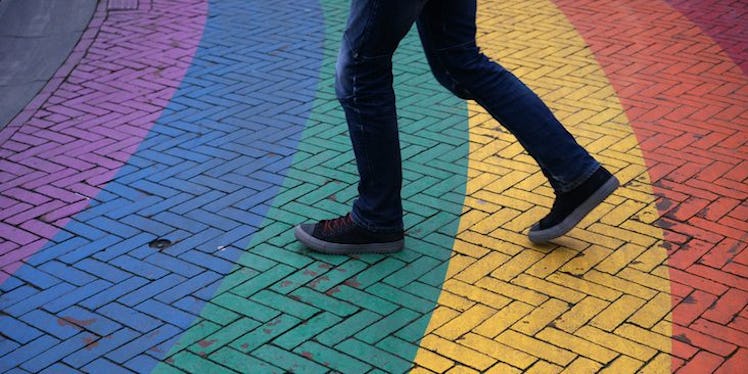June is Pride Month - and we're celebrating!
With the festivals and parades happening across the country, this time of the year is an opportunity to honor the beauty and diversity that comes from the LGBTQ+ community.
But, you're probably wondering... what does that "+" actually represent?
The "LGBTQ" part of the LGBTQ+ acronym is formed based on the following terms: lesbian, gay, bisexual, transgender, and queer. It's also common to see the acronym LGBTQQIA+ used nowadays, expanded for a more clear representation of lesbian, gay, bisexual, transgender, queer, questioning, intersex, and asexual people.
The "plus," on the other hand, may be open to some interpretation. The addition of this symbol has come to be extremely important due to its expansive meaning.
So what exactly does it mean? Well, quite simply put: The "plus" stands for love, acceptance, and the embracing of all.
Louis Ortiz-Fonesca, Senior Program Manager for LGBTQ Heath and Rights with Advocates for Youth, spoke to Elite Daily and said he would describe the inclusion of the "plus" as exactly that: a sense of inclusion.
"I explain it by simply saying that the 'plus' is an inclusive and intentional way of representing different identities and experiences," says Ortiz-Fonseca.
In his experience, Ortiz-Fonseca says even people within the community are sometimes not aware of the "plus."
Justin Kamimoto, founder of the community organization My LGBT Plus, echoed this sentiment and said he chose the name of his group since he felt "LGBT, LGBTQ, and even LGBTQQIA [weren't] encompassing and inclusive enough for [this] diverse community."
On their website, My LBGT Plus has set their mission to "connecting, interacting with, and supporting our LGBT+ community." They made a clear point to ensure everyone felt welcomed and that no one was excluded.
Kamimoto says the "plus" is specifically meant to include everyone, even straight allies and general supporters of the LGBT+ community.
Dr. Traci Lowenthal, psychologist and gender therapist at Creative Insights Counseling, says it would be difficult to include all the different ways people think of their identities. The "plus" is what helps to bridge that gap.
"There are countless ways a person may self-identify," says Lowenthal. "As such, it would be nearly impossible to add all of those identities to an already well-established acronym."
Lowenthal added,
The plus is used to indicate that the acronym means everyone in the gender and sexually expansive community. For instance, if someone identifies as Gender Non-Conforming and Pansexual, that's not necessarily indicated by the existing letters, but this person may still identify as part of the expansive community. The + allows everyone to be included!
Dr. Abi Weissman, a psychologist with a specialty in helping those that identify as intersex, views the "plus" a little differently.
While recognizing that the "plus" is inclusive, Weissman really values the importance of each specific letter. Because of her work with the intersex community, she finds it important to fight for the inclusion of each and every letter that can be used. Though the "plus" is openly representative, Weissmann believes it may not be fully valuing certain parts of the community.
"I hate the idea, though, of leaving anyone out by making a seemingly representative term exclusive," says Weissman. "After all, each letter represents individual people and their identity(ies) and/or orientation(s) and a social movement for equality. I want to support the work that people put in to fight for inclusion."
Despite multiple opinions, it's important to remember that the "plus" has no limit and specifically includes those that don't identify with a particular label. According to Ortiz-Fonesca, that's what makes it so important.
"This includes those within our communities that identify as gender non-binary, gender queer, asexual, pansexual, gender-expansive and the list goes on," says Ortiz-Fonesca. "Because the list goes on is why our community is beautiful."
Ortiz-Fonesca added,
[The] best way to approach identity or the 'plus' in LGBTQ is to believe and honor someone's truth and identity over any definition and LGBTQ glossary.
So... how do you officially define the "plus?" From all of this information, it's clear that you don't have to. The list that encompasses those represented by the "plus" goes on.
This month is about celebrating and respecting our diversity and individual identities, including those that fall somewhere within the "plus."
This June, let's support each other and give value to the different ways we've come to live and love.
